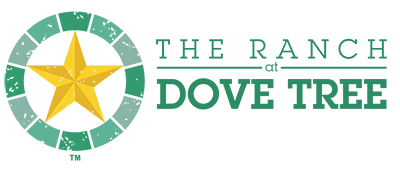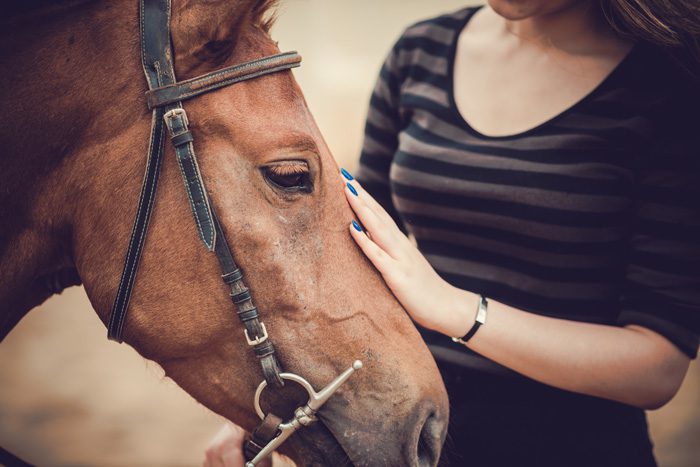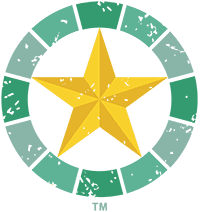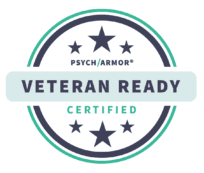Equine-assisted psychotherapy, or EAP, is used for a myriad of mental health issues.
Many people come out of addiction feeling a sense of worthlessness. Addiction depleted their overall mental and emotional state, and even though they are no longer using, they still feel hopeless.
Horses have an unusually keen sensitivity to their environment; they can sense human emotions and are very social creatures. They respond to people based solely on the interaction they are having at the moment. When used for therapeutic purposes, horses allow us to interact with them in a pure and non-threatening way. When we engage with them, they return in kind. This can begin breaking down the walls that addiction has built.
What is Equine-assisted psychotherapy for Addiction Recovery?
Equine-assisted psychotherapy (EAP) for addiction recovery is a therapeutic approach that involves the use of horses as a component of addiction treatment. It combines traditional psychotherapy techniques with interactions with horses to promote emotional healing, self-awareness, and personal growth in individuals recovering from addiction. Here are some key aspects of equine-assisted psychotherapy for addiction recovery:
- Therapeutic Alliance: EAP is conducted by trained mental health professionals who work in partnership with equine specialists and, of course, horses. The presence of horses can help establish a unique and powerful therapeutic alliance.
- Nonverbal Communication: Horses are highly attuned to nonverbal cues and emotions. Interacting with horses can help clients become more aware of their nonverbal communication patterns and emotional states, which is important for addiction recovery.
- Emotional Regulation: Working with horses can be emotionally challenging. Clients learn to manage their emotions and practice emotional regulation in a safe and supportive environment.
- Self-Awareness: EAP encourages self-reflection and self-awareness. Clients can gain insights into their behaviors, thought patterns, and emotional triggers, which are valuable for addressing addiction issues.
- Building Trust and Boundaries: Building a trusting and respectful relationship with a horse requires clear communication and healthy boundaries. These skills can be directly transferable to human relationships and sobriety maintenance.
- Problem-Solving and Coping Skills: Clients can develop problem-solving and coping skills through interactions with horses. These skills can be applied to challenges and triggers related to addiction.
- Empowerment and Confidence: As individuals achieve success in working with horses, they often experience increased self-esteem and self-confidence, which are important for overcoming addiction.
- Stress Reduction: Spending time with horses and engaging in equine activities can be a source of relaxation and stress reduction, helping clients manage triggers that may lead to substance use.
- Spiritual Connection: Some clients find a sense of spiritual or personal connection during equine therapy, which can be a valuable aspect of recovery.
- Group Dynamics: Equine-assisted therapy can be done in both individual and group settings. Group sessions allow clients to interact with peers, practice communication, and provide support to each other.
- Complementary to Traditional Therapy: Equine therapy is often used as a complementary treatment alongside traditional forms of psychotherapy, such as cognitive-behavioral therapy or individual counseling.
One can engage with the horse in a calm, peaceful way and get the same response back. This can help to build trust again. It has been shown that even just two sessions of EAP will have a positive effect on one’s self-esteem. Engaging with such a powerful and significant presence also helps break down fear barriers.
EAP is a hands-on approach to therapy. Who Can Benefit from Addiction Therapy with Horses?
Addiction therapy with horses, often referred to as equine-assisted therapy or equine-assisted psychotherapy, can be beneficial for a wide range of individuals who are struggling with addiction or substance abuse. This unique form of therapy involves interactions with horses and can offer several advantages for those seeking recovery and support:
- People with Substance Use Disorders: Individuals who are battling addiction, whether it’s to drugs, alcohol, or other substances, can benefit from equine-assisted therapy as part of their overall treatment plan. It can help them develop essential life skills, self-awareness, and emotional regulation while also building trust and forming healthier relationships.
- Dual Diagnosis Clients: Individuals who have both a substance use disorder and a co-occurring mental health issue, known as dual diagnosis, can find equine-assisted therapy particularly helpful. It can address the emotional and psychological aspects of addiction and provide a holistic approach to treatment.
- Adolescents and Teens: Equine therapy can be effective for younger individuals struggling with substance abuse. It offers a non-judgmental, engaging, and experiential approach that can resonate with teenagers, helping them open up and develop crucial coping skills.
- Veterans and First Responders: Equine therapy has shown promise in helping veterans and first responders who may be dealing with addiction as a result of trauma or PTSD. It can assist with managing symptoms and improving emotional well-being.
- Adults in Recovery: People who have completed a primary addiction treatment program and are in recovery can use equine-assisted therapy to maintain their sobriety, address underlying issues, and improve their emotional regulation and communication skills.
- At-Risk Youth: Youth who are at risk of developing substance abuse issues due to environmental factors or trauma can benefit from equine therapy as a preventative measure. It can help build resilience and teach them healthier ways to cope with challenges.
- Families and Loved Ones: Addiction does not only affect the individual with the substance use disorder; it also has a significant impact on their family and loved ones. Equine therapy can be used as a part of family therapy, helping families understand and heal together.
- People Seeking Alternative Approaches: Some individuals may not resonate with traditional talk therapy or prefer more experiential methods of healing. Equine therapy offers an alternative approach to addiction treatment that can be appealing to those seeking a unique and engaging therapeutic experience.
Benefits of Equine Therapy for Addiction Recovery
The client can choose the horse they want to work with, practice grooming and brushing the horse, and even take the horse for walks. Afterward, discussion with a therapist is used to pinpoint the client’s emotional reaction.
EAP has not only been used in addiction recovery, but has also been proven effective with depression, relaxation, and self-control. Other mental health benefits include:
- Emotional Regulation: Working with horses can help individuals develop emotional regulation skills and increase self-awareness.
- Building Relationships: Interacting with horses can promote the development of trust, communication, and relationship-building skills.
- Improved Self-Esteem: Success in working with horses can boost self-esteem and confidence.
- Reduced Stress and Anxiety: Many people find the presence of horses and the activities involved to be calming and therapeutic, which can help reduce stress and anxiety.
It’s important to note that equine-assisted psychotherapy is not a replacement for traditional mental health treatments, but it can be a valuable complementary approach for many individuals.\
Why choose an animal-assisted addiction treatment facility?
Equine therapy, also known as equine-assisted therapy or equine-assisted psychotherapy, offers a unique and effective approach to therapeutic treatment for various individuals and conditions. There are several reasons why someone might choose equine therapy:
- Experiential Learning: Equine therapy is an experiential form of therapy, which means it involves hands-on experiences and interactions with horses. This can be particularly effective for individuals who learn best by doing, rather than just talking or thinking about their issues.
- Non-Judgmental Environment: Horses are non-judgmental animals, which can create a safe and non-threatening environment for individuals to express themselves and work through emotional and psychological challenges. This can be especially appealing to those who may feel stigmatized or judged in traditional therapy settings.
- Emotional Regulation: Working with horses can help individuals develop emotional regulation skills. Horses are highly attuned to human emotions, and their responses to a person’s emotional state can provide immediate and honest feedback. This can help individuals become more aware of their emotions and learn to manage them effectively.
- Building Trust and Relationships: Building a bond with a horse requires trust, patience, and effective communication. These skills can translate to improved interpersonal relationships in the person’s life. Many people with addiction or mental health issues struggle with trust and relationship-building, making equine therapy a valuable tool.
- Holistic Approach: Equine therapy takes a holistic approach to treatment by addressing the emotional, mental, and physical aspects of a person’s well-being. It can help individuals connect with their bodies and emotions in a way that complements traditional talk therapy.
- Stress Reduction: Spending time with horses and being in a natural, outdoor environment can be inherently relaxing and stress-reducing. This can benefit individuals dealing with anxiety, trauma, or other mental health issues.
- Versatility: Equine therapy can be adapted to address a wide range of issues, from addiction and substance abuse to PTSD, anxiety, depression, and more. It is suitable for children, adolescents, adults, and seniors, making it a versatile therapeutic approach.
- Alternative to Talk Therapy: For some individuals, traditional talk therapy may not be as effective or engaging. Equine therapy offers an alternative means of expression and healing, making it a valuable choice for those seeking a different approach to therapy.
- Physical Activity: Engaging with horses often involves physical activities such as grooming, riding, and caring for the animals. This can be appealing to individuals who benefit from physical movement and activity as part of their healing process.
- Positive Feedback and Accomplishment: Successfully working with a horse can provide a sense of accomplishment and self-esteem. These positive experiences can counteract feelings of hopelessness or inadequacy that may accompany mental health issues or addiction.
Who would have thought that these beautiful creatures that have been part of human society for thousands of years would have such a wonderful impact on us?
Resource:
How Horses Help With Mental Health Issues. Everyday Health. Retrieved February, 2017.













